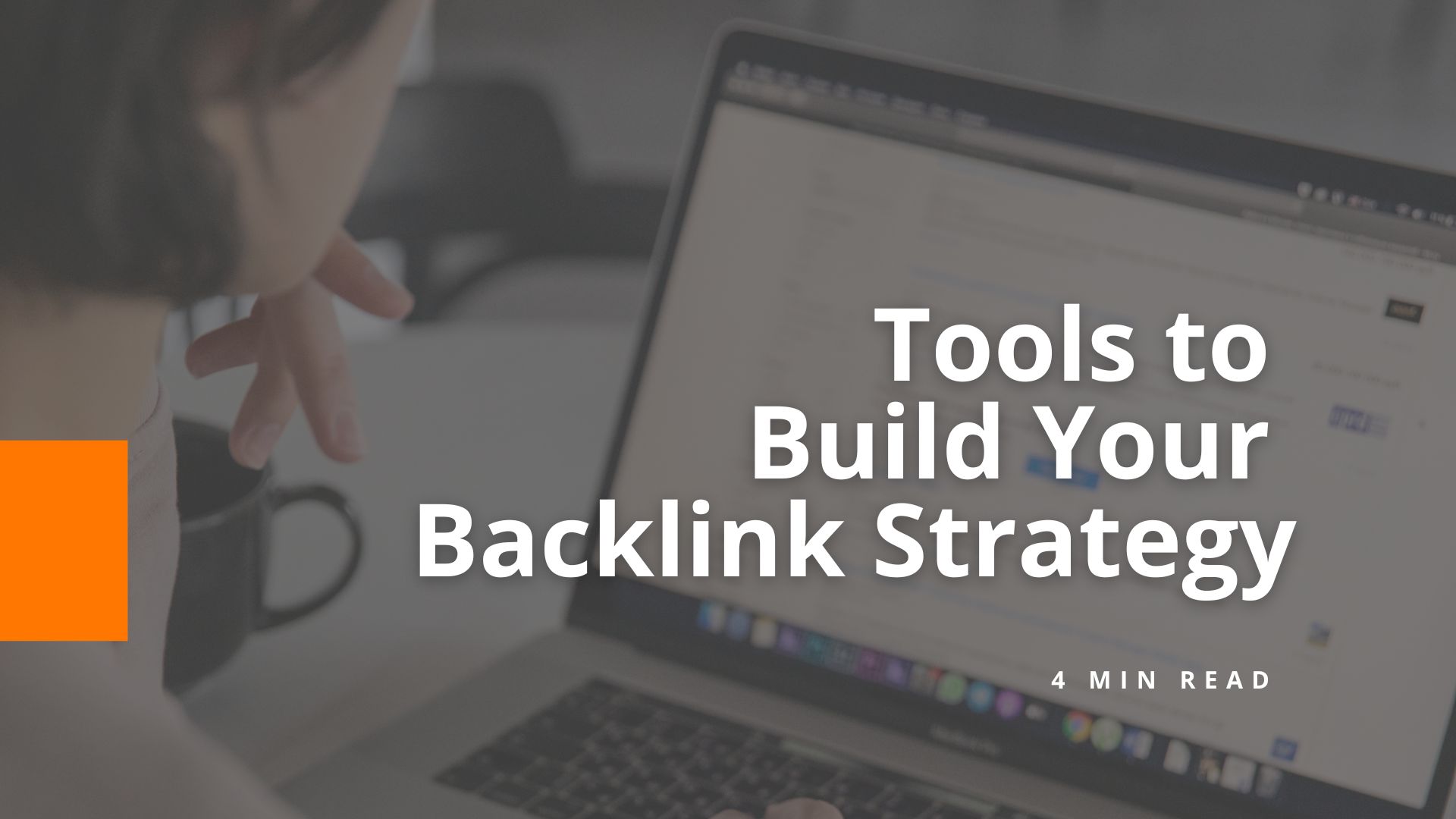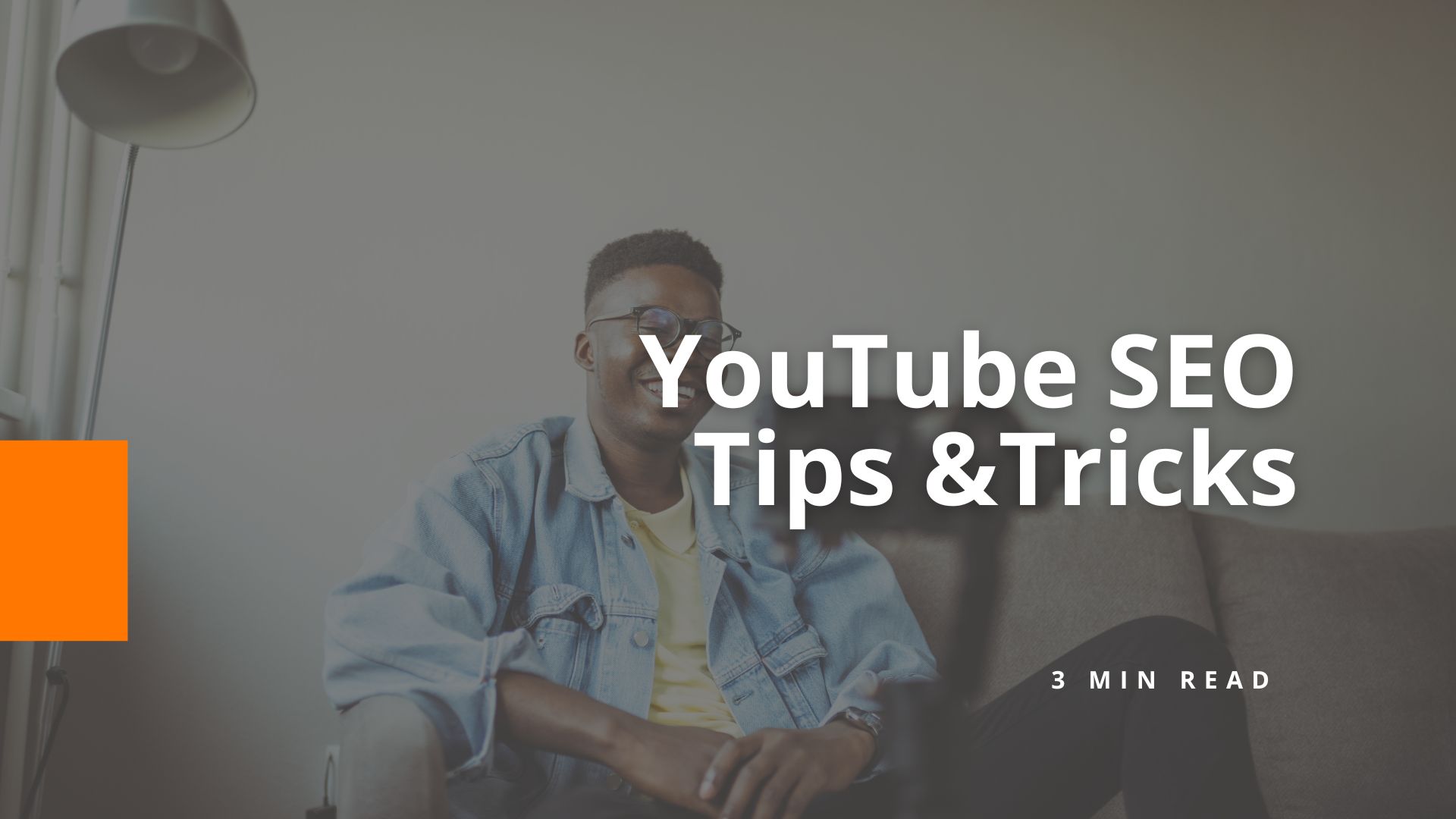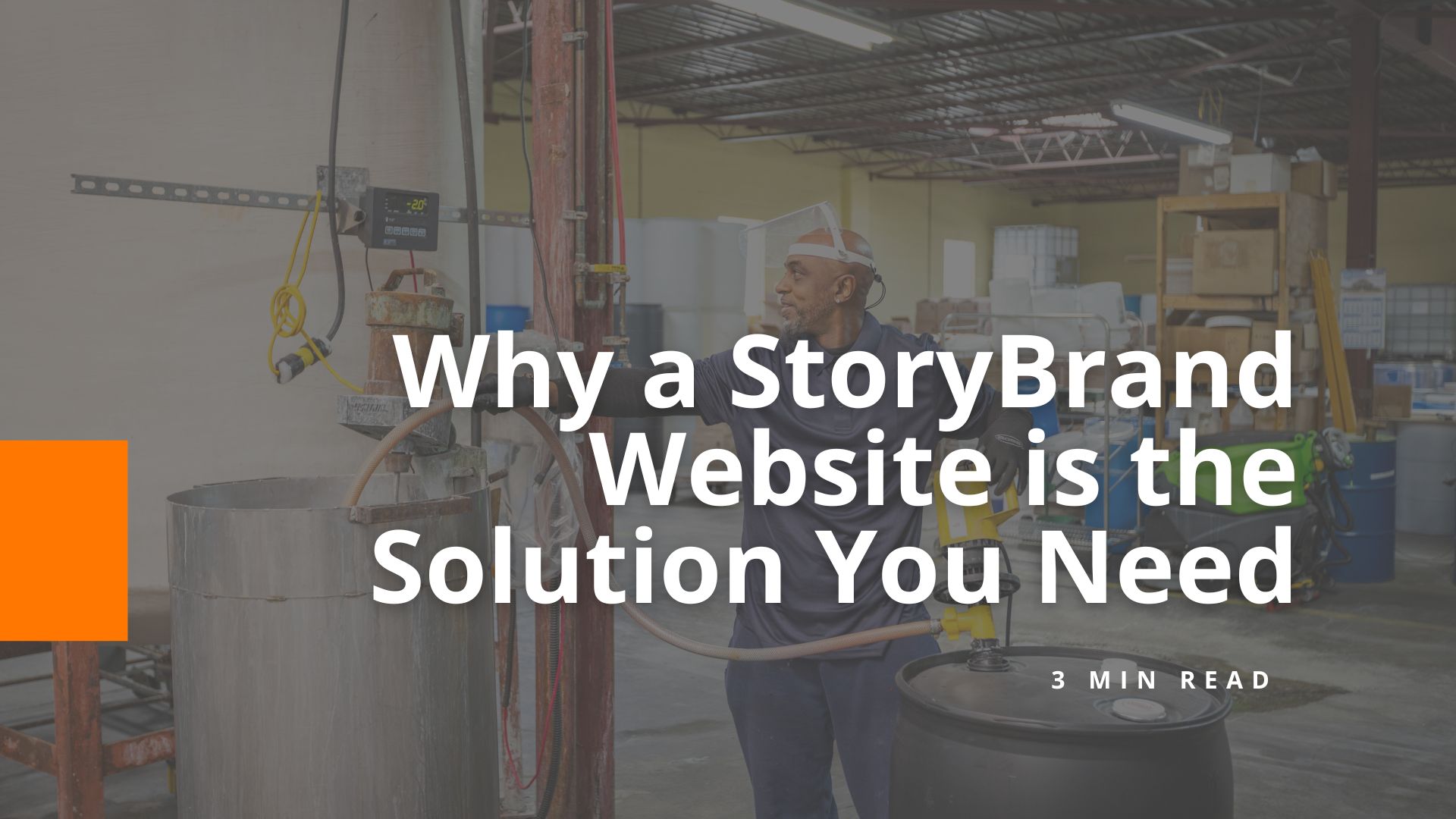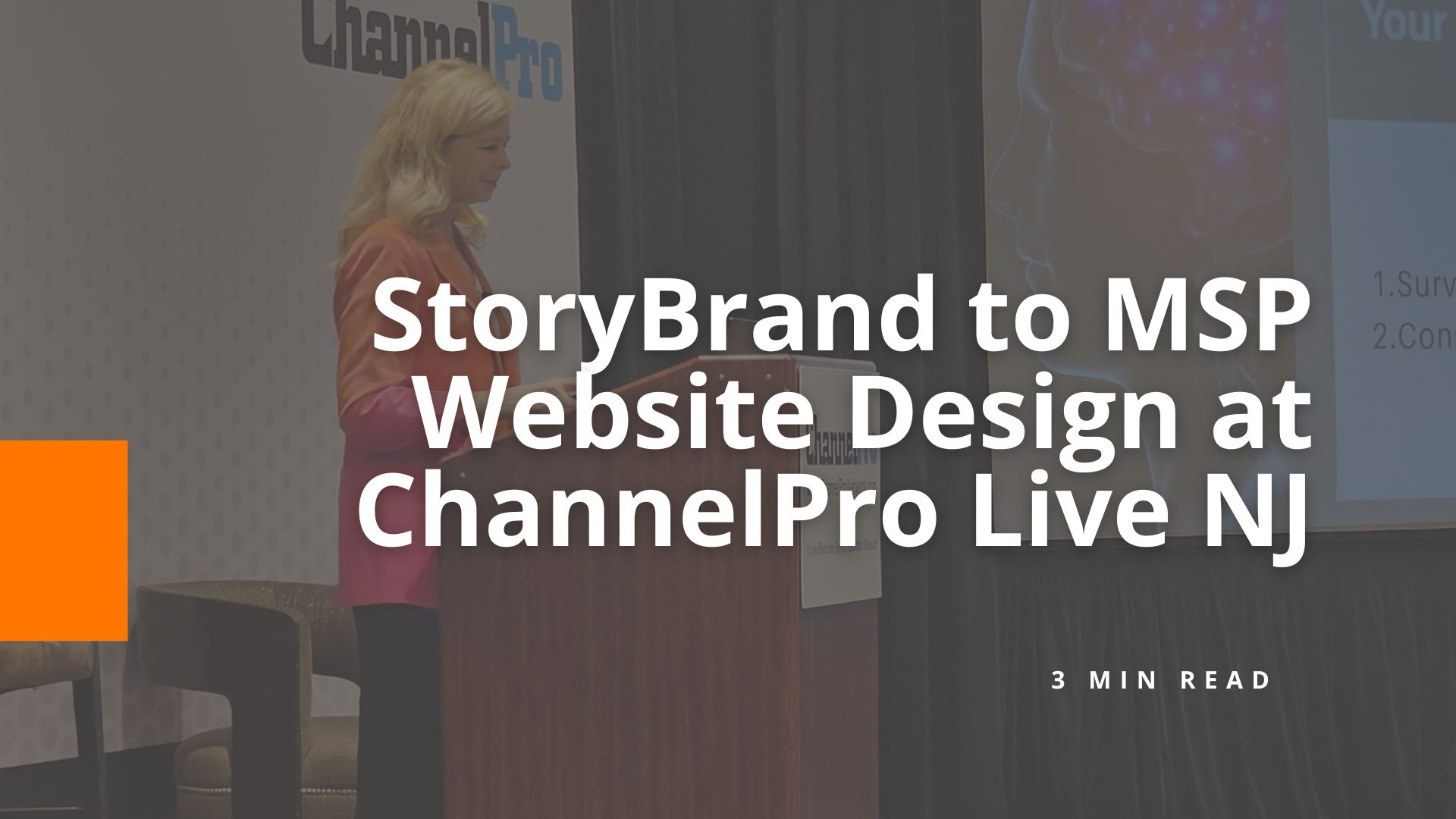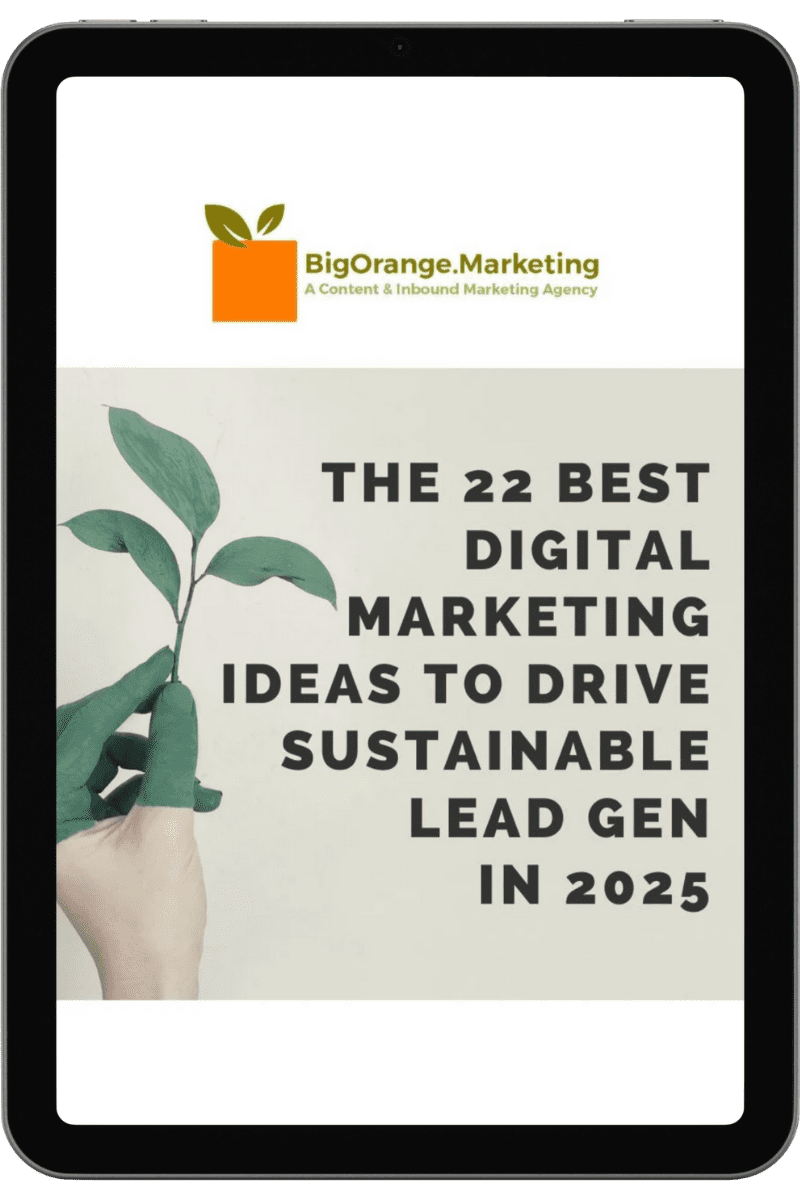Unleashing the Inner Spielberg: BigOrange Presents StoryBrand Framework for Websites to NAHB Builders
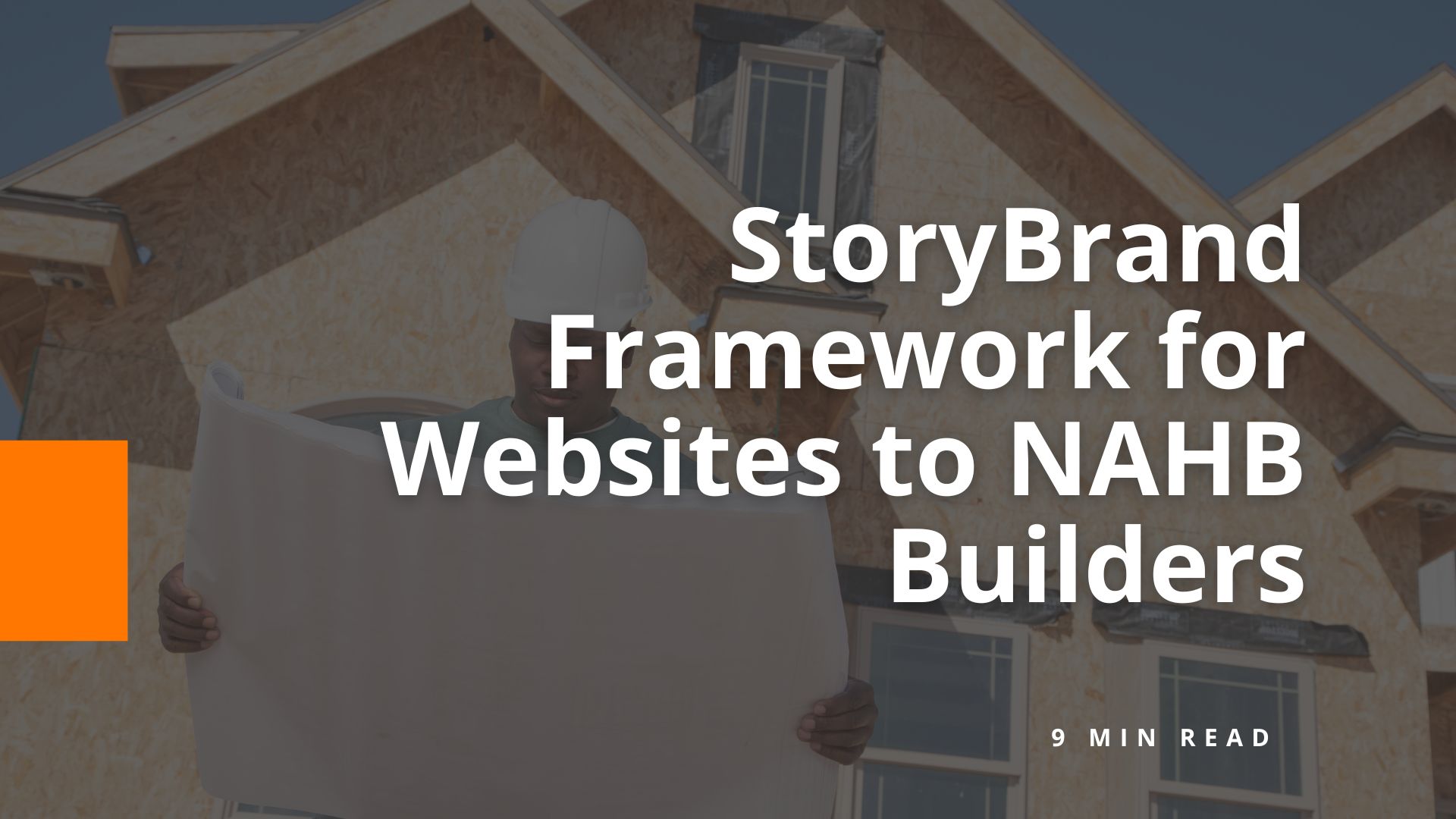
I was thrilled to be invited to Indianapolis to present at a National Association of Home Builders (NAHB) Builder 20 Club event this October. Sharing my knowledge of the seven-part StoryBrand framework for websites with this amazing group of builders (humorously known as the “Loose Screws”) was an honor.
The goal? To help them transform their websites into powerful blockbuster tools that resonate with their clients and drive business growth through storytelling in marketing.

Introducing the 7-Part StoryBrand Framework for Builders
I kicked off the presentation with the words, “let me tell you a story” and continued to describe this situation:
“Executive VP Gina at a consumer products firm is a mother of two and searching for a custom home builder on an early Saturday morning before her kids wake up. She feels frustrated and overwhelmed by disorganized and indifferent builder’s websites that are unclear, and fail to share how they help solve her family’s needs for a home built for them.
She is on the internet checking out another builder’s reviews as the clock ticks and her kids are minutes from waking up and the race to soccer starts again.”
I asked if the builders could feel their brains start to relax with the words, “Let me tell you a story.” With nods all around, I launched into the seven-part StoryBrand framework for websites, a methodology based on storytelling, a device that is as old as time and yet also helps us cut through the clutter of today’s noisy environments.
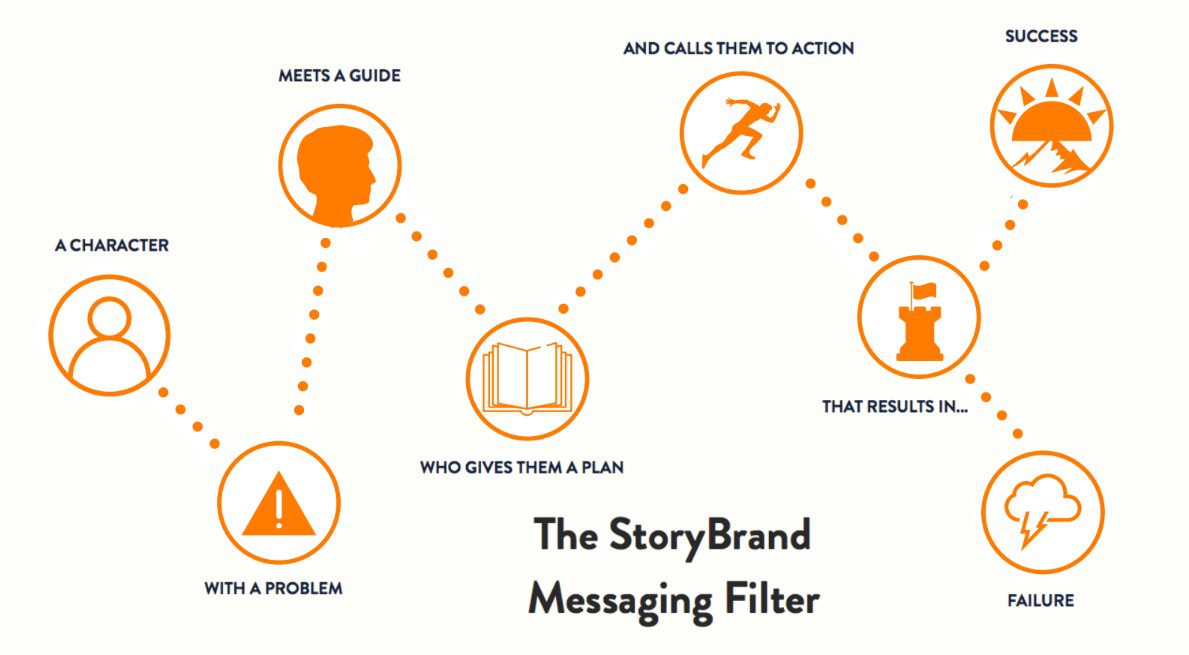
Here’s a quick breakdown of the elements of classic stories:
1. The Character
Remember that your potential customer is the hero of the story. Your company, as a provider of products or services, is the guide.
Identify your customers’ specific needs and desires. For example, in Steven Spielberg’s blockbuster films, main characters like Elliott from E.T. and Indiana Jones embody the classic hero’s journey, facing extraordinary challenges.
2. The Problem
Highlight the primary challenge or pain point the customer faces.
Explain the different layers of the problem — external, internal and philosophical. Here are some Spielberg examples of primary challenges: In Saving Private Ryan, Captain Miller struggles with risking his men’s lives to save one soldier. In Jaws, Chief Brody must protect his town from a killer shark, but quickly realizes they’re going to need a bigger boat.
3. The Guide
As part of storytelling marketing, I recommended that the builders in attendance position themselves as the experts who can help customers overcome their challenges.
The key is to build credibility by showing empathy and expertise. See how this plays out in movies: In E.T., the alien guides Elliott through emotional growth and self-discovery, while Jeff Goldblum’s Dr. Ian Malcolm in Jurassic Park warns of the dangers of tampering with nature, a role he humorously reprises at Apartments.com, guiding renters through the chaos of apartment hunting.
4. The Plan
Another key to StoryBrand messaging is to provide a clear, actionable plan that helps the customer feel confident moving forward.
On your website, be sure to outline very easy steps visitors and potential clients can take that guide them toward solving their problem.
5. The Call to Action
In every movie, a plan of action sets the story and the main character in motion. Encouraging potential customers to take a specific action, like booking a consultation or getting a quote, will help bring leads through builders’ websites.
To make this Call to Action as effective as possible, be sure it’s clear and easy to find. I asked the builders in attendance to consider using Calls to Action like “book a meeting” or “let’s talk” rather than less-direct, somewhat vague wording like “learn more.”
6. Avoid Failure
The role of this element of the StoryBrand framework is to illustrate what’s at stake if the customer doesn’t take action. For visitors to a builder’s website, the cost of inaction is being stuck with a home that doesn’t suit you. I explained that website content should emphasize the consequences of inaction in order to create urgency.
7. Success
Not every movie has a happy ending, but every builder wants their clients to live happily ever after (in a home they’ve created). Builders’ websites should paint a vivid picture of the success customers will achieve when they work with the builder. Use testimonials, success stories and, of course, professional photography, to bring this vision to life.
I love walking through these steps because it’s such an effective way to show businesses how to simplify their messaging and make it customer-focused. The builders were engaged, and it was exciting to see them thinking about how they could apply these ideas to their own businesses.
Here is the presentation, you can download it here as a PDF or a PowerPoint, or listen to a recording.
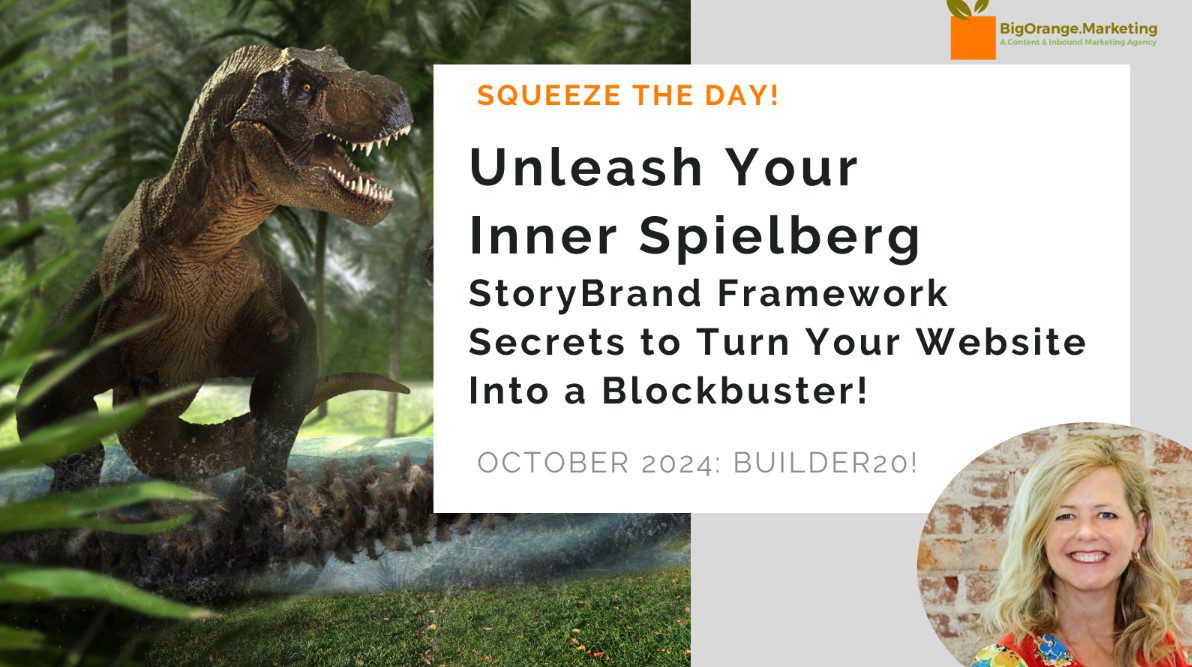
Turning StoryBrand Into a Website
One of the highlights of my talk was demonstrating how the StoryBrand framework directly translates into website design. Builders often struggle to create clear and effective websites, so I walked them through a site transformation.
First off, the home hero section of the site.

This introductory section, complete with gorgeous photo, should cover the character, problem and guide (parts 1, 2 and 3 of the StoryBrand framework).
- Character: Position the customer as the hero, making it clear that their needs and desires are central to your services.
- Problem: Address their pain points, such as budget concerns, design overwhelm or timeline worries.
- Guide: Present yourself as the trusted expert who understands their challenges and can lead them through the home-building process with confidence and clarity.
Next, we considered the plan segment of the framework.
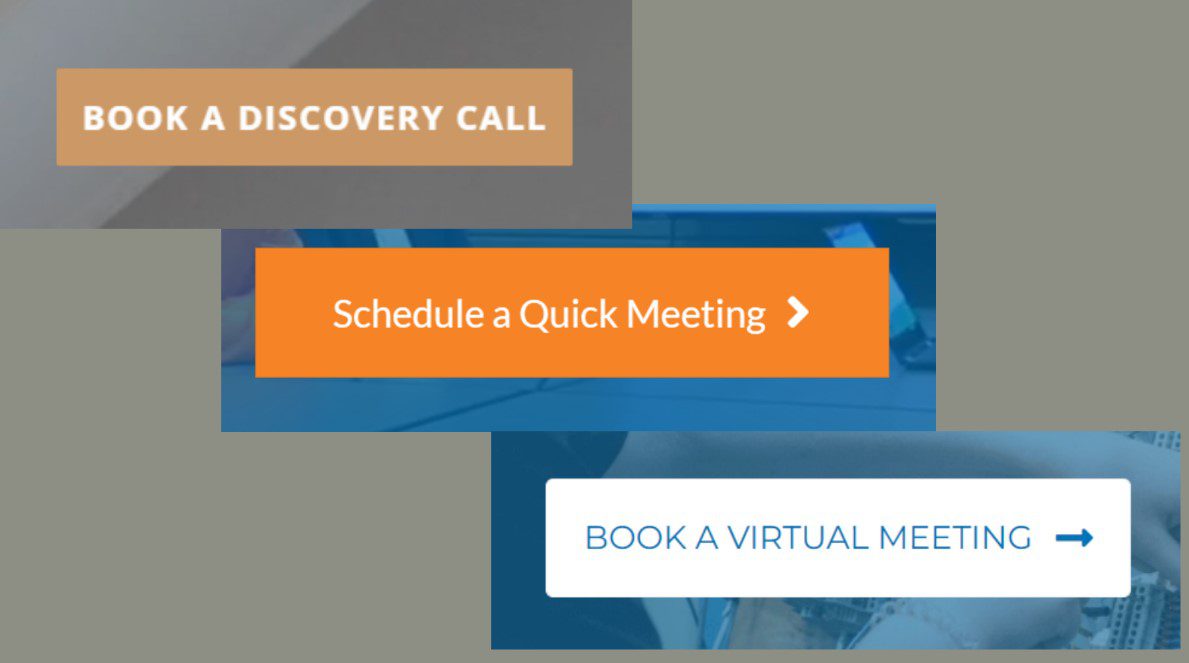
The simple three-step plan (part 4 of the StoryBrand framework) illustrates how easy it is to work with a builder.
- 1-2-3 Plan: When it’s time for customers to make a financial commitment, friction often enters the conversation. To ease this anxiety and keep the process moving forward, it’s essential to break the journey down into a simple, easy-to-follow three-step plan.
With the plan in place, the Call to Action should be crafted.
Clear Calls to Action (part 5 of the StoryBrand framework) provide clear, compelling steps for customers to take.
- Example CTAs: “Book a virtual meeting,” “schedule a fit call” or “request a free consultation.”
- Be consistent: Make the CTA into a very visible button. Make this “next step” obvious, consistent and accessible throughout the site to drive conversions.
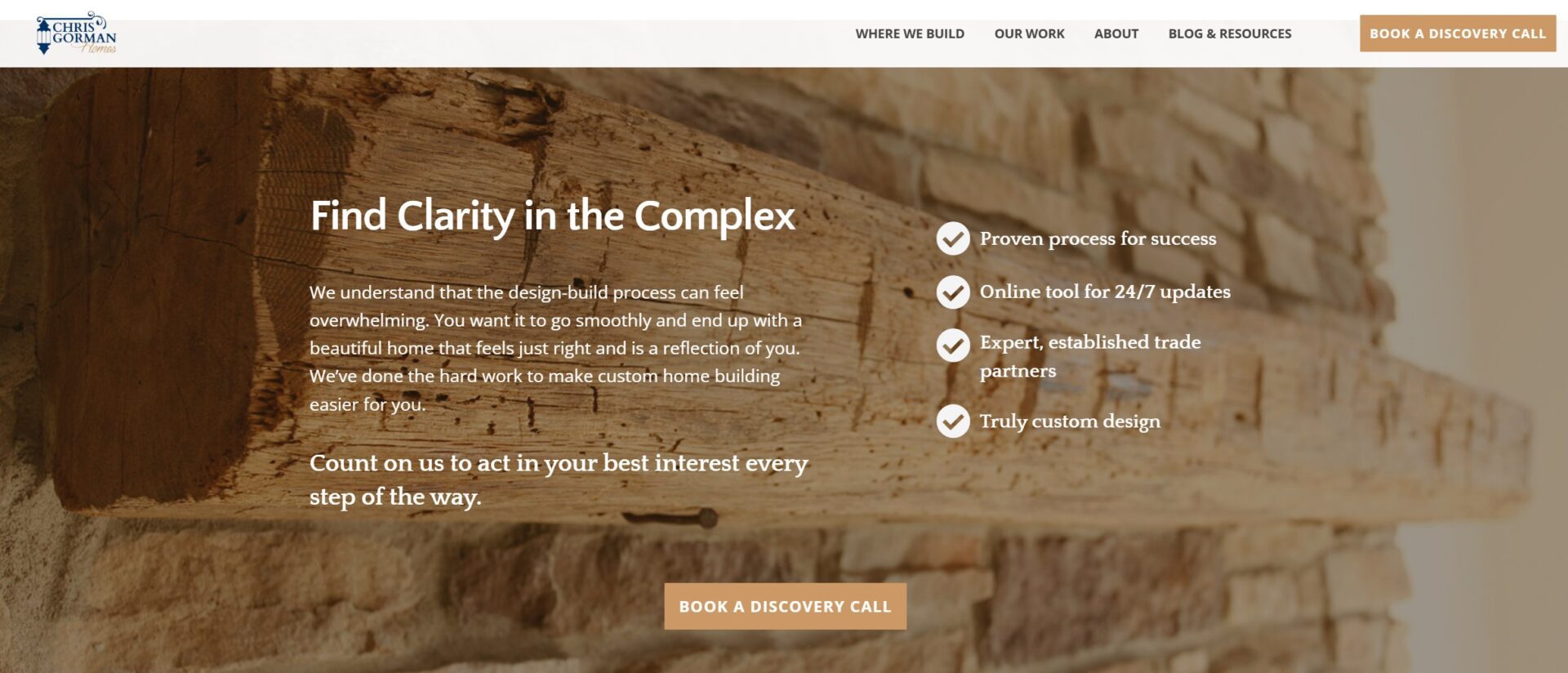
To be sure the hero is supported along the journey, we suggested that the builders paint a picture of success (part 6 of the StoryBrand framework) on their site.
- Testimonials: Share real client stories that show how the builder’s process leads to success.
- Description of both empathy and authority: Demonstrate both empathy for customer challenges and authority in the field through concise, trust-building content.
- “Value stacks” and value propositions: These segments of content highlight the unique value a builder brings, such as craftsmanship, transparency or project management efficiency, ensuring customers see the benefits of working with that builder.
I reminded the builders that if there are no consequences for not doing business with them, there’s no real urgency for customers to take action.
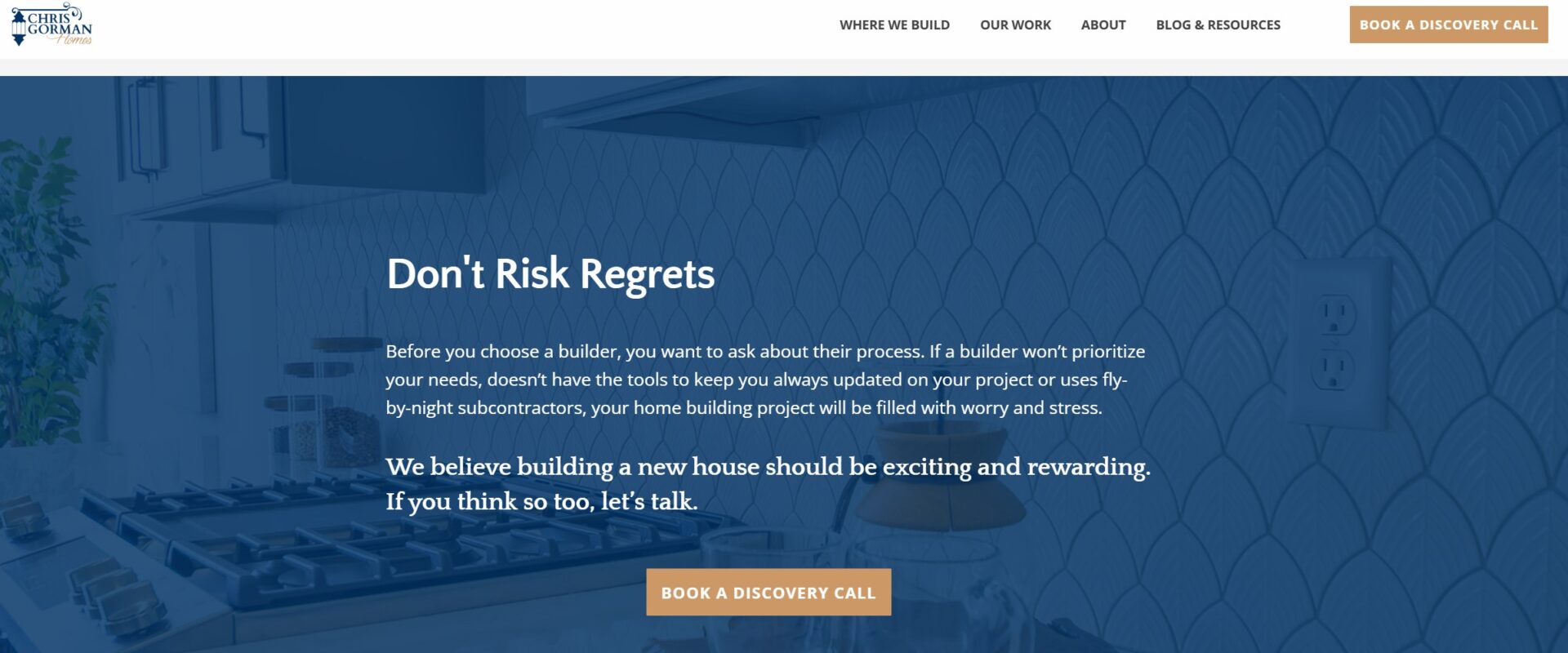
This is where loss avoidance and “I feel your pain” statements (part 7 of the StoryBrand framework) come into play.
- Loss avoidance: Remind customers that choosing the wrong builder can lead to missed deadlines, poor quality or unexpected costs.
- “I feel your pain”: On their websites, builders should acknowledge their customers’ frustrations with past experiences and reassure them that their process avoids these common pitfalls; offering a smoother, more reliable outcome.
By demonstrating these practical applications, I aimed to empower the group to see how StoryBrand can transform their digital presence.
The Impact and Key Takeaways
The Loose Screws were an engaged and dynamic group of custom builders. It was fantastic to see them respond so positively to the storytelling in marketing content, and their questions showed how eager they were to implement these strategies.
Here’s what stood out:
Key Lessons for the Group
- Be the guide: Positioning themselves as the trusted guide, not the hero, was a major takeaway.
- Simplify the message: Builders learned the value of keeping their website messaging clear and customer-focused.
- Calls to Action: We discussed the importance of consistent, action-oriented Calls to Action (CTAs) throughout their sites.
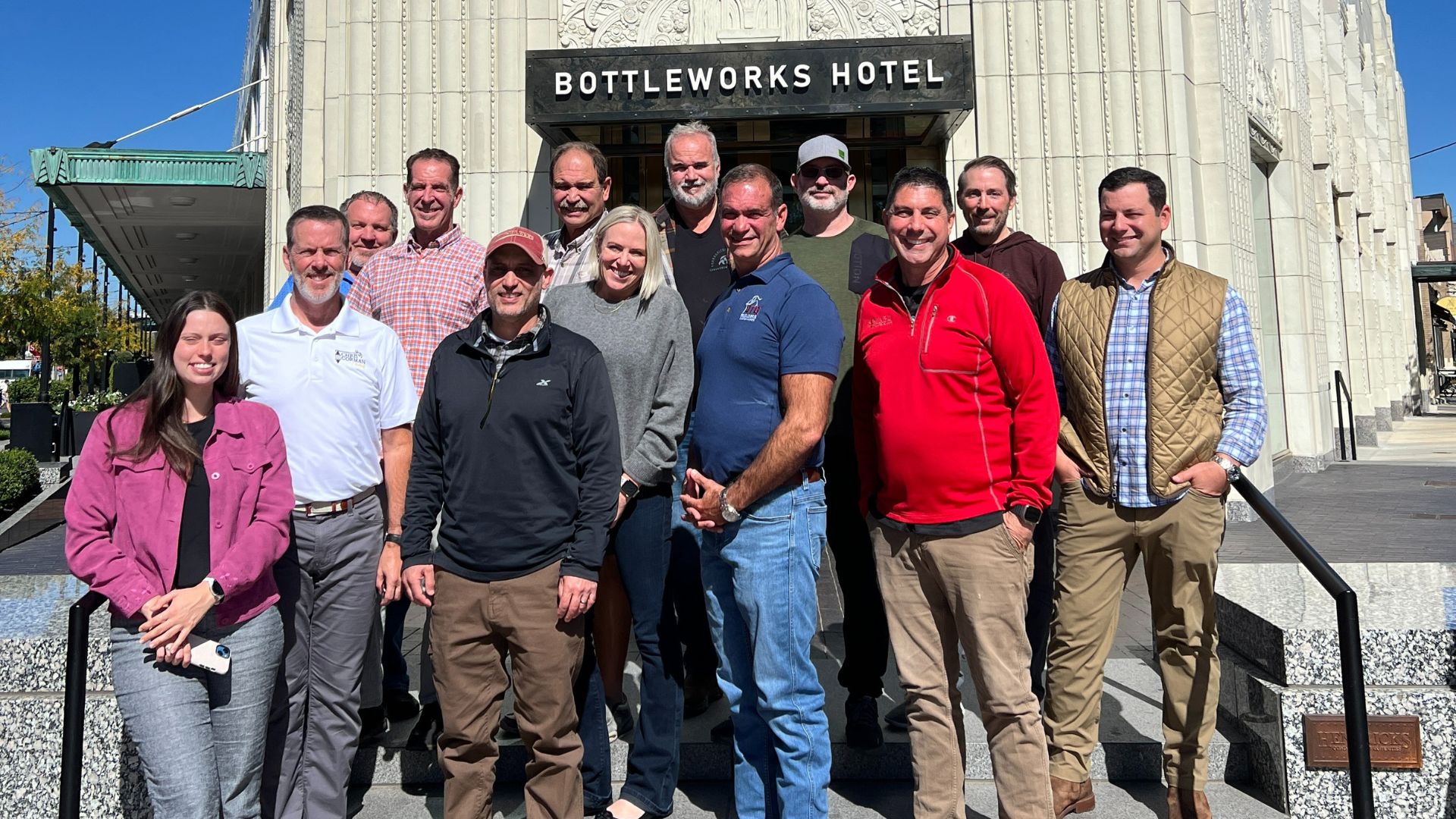
Peer to Peer Support of a Builder 20 Club
I was proud to meet with such a dedicated group of builders who are not only committed to growing their businesses but also to continuously improving their skills through the Builder 20 Clubs from the National Association of Home Builders.
It’s inspiring to see how these builders come together to share insights, solve common challenges and hold each other accountable, all while staying ahead of industry trends and enhancing their leadership abilities.
Here are a few of the top builders I met that day. I highly recommend them all for their dedication to growing the craft of building “home.”
- Chris Gorman Homes: Top Cincinnati custom home builder
- Generation Homes: Top Charleston, South Carolina, custom home builder
- Alair Homes: Leading custom home builders nationwide in 14 states
- Gen Group Homes: Premier custom homes in Louisiana
- GTG Custom Home Builders: Custom homes in New Jersey
- Groninger Homes: Custom homes in Central Florida
- Progress Street Builders: Innovative homes in the New River Valley and Lynchburg, Virginia
- Grande Custom Builders: Luxury Homes in Charlotte, North Carolina
- Altmann Builders: Custom home builders in Reno, Nevada
- Green Square Construction: High-performance homes in Indianapolis, Indiana
- Sabo Custom Builders: Custom homes in Houston, Texas
- Vision Design and Build: San Antonio’s custom home experts
- Choice Builders: Premier custom home builders in Cedar City and Iron County, Utah
- MJ Whelan Construction: Custom homes in Michigan
If you’re interested in learning more about how to transform your website using the StoryBrand framework and storytelling in marketing, reach out to BigOrange for a consultation or keep an eye out for our next event. Let’s turn your story into a blockbuster! Book a meeting with BigOrange to learn more about StoryBrand websites and marketing services.
Share the knowledge
Essential Backlink Building Tools to Boost Your SEO Strategy
Backlinks are still a critical factor in boosting your search engine optimization (SEO). They help your website build authority, improve rankings in results and drive…
Explore this TopicJoin Us at Cincy AI Week 2025
Is there anything artificial intelligence (AI) can’t do? It can help you understand that confusing Excel sheet someone sent you, take notes in your meetings,…
Explore this TopicTop Tips for Manufacturers: Marketing to Industrial Companies
Marketing to industrial companies can feel like a different ballgame compared to marketing consumer products. Buyers are looking for expertise, trust and long-term partnerships, not…
Explore this TopicSearch Everywhere Optimization: The Next Evolution in SEO
Search has left the search bar and getting your questions answered is moving away from a “just Google it” approach. People are turning to TikTok…
Explore this TopicNew Launch: StoryBrand for Manufacturers
When Oliver Chemical, a Cincinnati-based industrial cleaning chemical company, set out to revamp its website, the goal was clear: Create a site that clearly explains…
Explore this TopicHow to Get Your Business to Show Up in AI Results
Generative AI search using tools like ChatGPT is transforming how people search for information. It is essential to optimize your company’s marketing efforts for AI’s…
Explore this TopicLights, Camera, Clarify! Bring StoryBrand to MSP Website Design at ChannelPro Live NJ
Here are our StoryBrand slides from our talk at ChanelPro Live NJ! 📄 View or Download PDF As the CEO of BigOrange Marketing, I’m honored…
Explore this Topic

